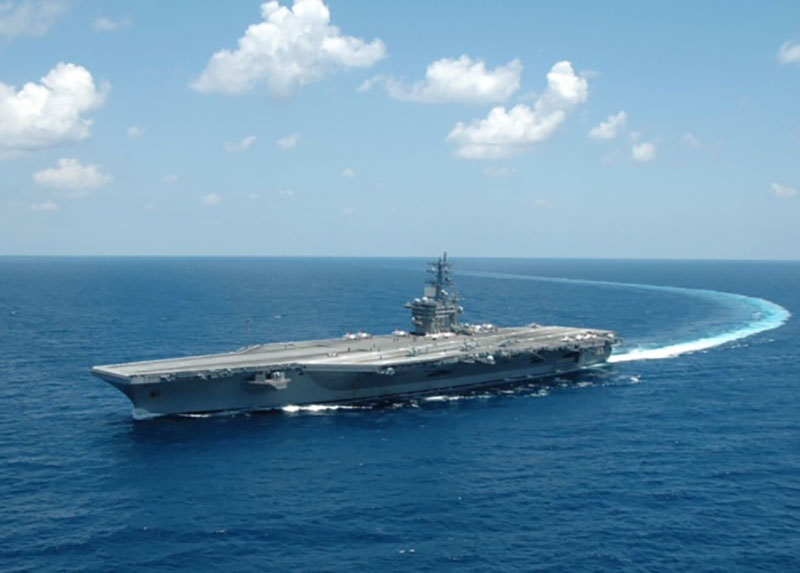An Iranian-backed Civil War Spreading into the Red Sea Impacting Israel-Gaza Conflict and Shipping

Yemen is a nation of 34.5 million people located on the southern end of the Arabian peninsula and bordered by Saudi Arabia on the north and Oman on the northeast. It borders the southern end of the Red Sea on the west, the Gulf of Aden on the south, and the Arabian Sea on the southeast. It has maritime borders with Eritrea, Djibouti, and Somalia. It is the second largest country on the Arabian peninsula. Its price adjusted annual GDP per person was only $2,053 in 2023. According to the CIA Factbook, the literacy rate is about 70 percent. The population is over 99 percent Muslim, of which about 58 percent are Sunni and 42 percent are Shia Muslims, primarily of the Zaydi branch closely associated with the Houthi rebels. The legal system is primarily Islamic Law (Sharia) supplemented by Napoleonic Law, English Common Law, and local traditions.
Yemen was part of the Ottoman Empire until 1918 and then became a British protectorate until 1962. The port of Aden (recent population 860,000) on its southern coast was one of the busiest in the world during World War II. Following the withdrawal of Britain, most of Yemen became the Yemen Arab Republic, while Aden and South Yemen separated and became a Marxist state in 1967. Thereafter Yemen had a checkered series of divisions until it was finally united as the Republic of Yemen in 1990. The same internal religious and political divisions, however, continued to exist.
There has been a civil war between the Houthis and the Western recognized government since 2011. The Houthis, who are Zaydi Shia Muslims, captured the capital city of Sanaa, population about 3.3 million, and the most populous western third of the country in late 2014 and 2015. Sanaa is one of the highest capital cities in the world at elevation 7,320 feet.
A large part of the area now under Houthi dominance was once the Kingdom of Saba, the Kingdom of Sheba mentioned in the Bible during the time of King Solomon and the Queen of Sheba. Several Old Testament books including Genesis, Isaiah, Ezekiel, and Job mention the Sabaeans. In Job’s case, they seem to have been destructive marauders. They are also mentioned in the Quran.
The Houthi are backed, armed, and supplied by the Iranian Shia government. Iranian IRGC troops and Al-Qaeda terrorists are involved on the Houthi side.
The Houthi Movement is officially named Ansar Allah, Supporters of Allah.
The Houthi Yemeni State is officially governed by a Supreme Political Council (SPC) consisting of 9 members and headed by its Chairman, currently Mahdi al-Mashat. The SPC coordinates the actions of the General People’s Congress (GPC) and executive and foreign affairs actions needed to rule Yemen. There is also an influential Houthi Islamic Shura Council, headed by its Speaker, Muhammad Husayn Al-Aydarous. The real executive decisions of the Houthi Movement, however, are made by the Supreme Jihad Council of 9 men, many of whom have the surname of the founder, Hussein Badr al-Din al-Houthi. The current supreme leader and commander of the Houthi Movement and de facto head of Houthi Yemeni State is Abdul-Malik al-Houthi, age 44. The Houthi movement is a revivalist form of Shia Islam. but its primary mottos reflect its relatively recent beginning in 1994:
Allah is the Greatest
Death to America
Death to Israel
A Curse Upon the Jews
Victory to Islam.
Both the Saudis and the United Arab Emirates (UAE) have intervened on the side of Western-backed government and have captured some key ports and areas previously held by the Houthis. Moreover, UAE-supported Yemeni-secessionist forces occupy Aden and several other important ports and a large area of southern Yemen, opposing the Houthi but complicating the political situation. Because the Houthis are extremely anti-Saudi, anti-Israel, and anti-U.S., the conflict is frequently viewed as a Saudi-Iran proxy war.
The Houthi government has about 150,000 to 200,000 fighting men. Its Al-Qaeda and Iranian IRGC allies have perhaps another 10,000 highly trained troops. The Western recognized Yemeni government has about 114,000 soldiers, 150,000 paramilitary troops, and about 170 warplanes and four warships. The UAE has trained militias in southern Yemen totaling between 150,000 to 200,000 men. Thus far, about 150,000 combatants and civilians have been killed as a direct result of military actions, and another 150,000 have died as a result of the various deprivations of war. More than 4.0 million people have been displaced from their homes.
The Red Sea Crisis
By November 1, 2023, the Houthis had begun firing missiles and launching explosive UAV drones from northern Yemen into Israel. These attacks have continued to increase since then. Many were intercepted by Israeli Defense Force missile defenses, the Israeli Air Force, and U.S., Brtish, and French naval forces. Many others fell short. In response, both British and American air and naval forces have struck sites in northern Yemen with bombs, missiles, and drones.
By November 15, Houthi missiles and drones were being aimed at both American and British Navy ships patrolling the Red Sea as well a commercial shipping that might be helpful to Israel. They have also been successful in reducing the shipment of oil and other critical resources through the Red Sea and the Suez Canal.
The Houthis have been using Iranian missiles, rockets, and drones against British and American warships and Saudi and UAE intervention or potential intervention forces. For their relatively small numbers and limited training, the Houthis are raising havoc in the Red Sea. Much critical shipping is now being routed around Africa rather than going through the Red Sea and Suez Canal.
So far, the Houthis have used Iranian missiles with a range as high as 1,100 miles and cruise missiles with a range as high as 1,200 miles. Three different Iranian UAV drones with ranges of 1,100 to 1,600 miles are being launched at Israel. Houthi drones are frequently launched at U.S. and British warships but have been shot down by air-defense systems or Naval aircraft. At least one was shot down by a U.S. F-35.
In January 2024, the Houthis intensified their attacks on U.S. and British Naval ships. On January 10, a large-scale attack was initiated by the Houthis against the US Aircraft Carrier Eisenhower, our largest and most modern nuclear supercarrier with a crew of nearly 5,000. Also attacked were destroyers and other ships supporting the Eisenhower—specifically, the USS Gravely, USS Laboon, USS Mason, and HMS Diamond. At least 21 missiles and UAVs (drones) were launched at them by the Houthis.
The intensity of Houthi attacks against U.S, UK, and allied Naval ships and merchant ships has continued to intensify and now occurs almost daily.
On February 3, the day after intensive U.S. bombing of Syrian and Iraqi targets, the US and UK conducted strikes against 36 Houthi sites, which included underground facilities, UAV storage and operation sites, missile systems, radars, and helicopters in 13 different locations across Houthi-controlled Yemen. Houthi officials responded that they would "meet escalation with escalation.” The U.S. and at least six European allies are now essentially engaged in a growing proxy war with Iran. Iran is supplying elite Quds and IRGC military personnel to the Houthis’ Jihad against Israel and America. North Korea is supplying equipment to the Houthis.
British diplomats with past experience in Yemen do not believe the Houthis, who they describe as cruel and fanatical, are likely to negotiate peace with the U.S., Israel, or European allies.
All this is happening when the United States has nearly run itself out of conventional war ammunition supporting the Ukraine Project. In addition, the present administration is destroying the effectiveness of our own armed forces with Critical Race Theory and DEI ideological nonsense that won’t work in peace, much less in war. Overcoming crisis requires rethinking.
“Mortal danger is an effective antidote for failed ideas.”—Erwin Rommel









 Mike Scruggs is the author of two books: The Un-Civil War: Shattering the Historical Myths; and Lessons from the Vietnam War: Truths the Media Never Told You, and over 600 articles on military history, national security, intelligent design, genealogical genetics, immigration, current political affairs, Islam, and the Middle East.
Mike Scruggs is the author of two books: The Un-Civil War: Shattering the Historical Myths; and Lessons from the Vietnam War: Truths the Media Never Told You, and over 600 articles on military history, national security, intelligent design, genealogical genetics, immigration, current political affairs, Islam, and the Middle East. 



